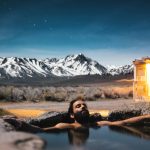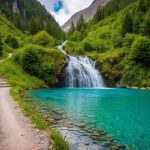DIY Travel Photography: Mastering Stunning Vacation Photos
Essential Lenses for Every Destination
Lenses play a critical role in capturing varied scenes. A standard zoom lens (e.g., 24-70mm) is versatile, covering landscapes, portraits, and street photography.
For landscape shots, a wide-angle lens (e.g., 16-35mm) captures expansive views, while a prime lens (e.g., 50mm) offers superb low-light performance and sharpness for portraits.
Depending on the destination, a telephoto lens (e.g., 70-200mm) can be exceptional for wildlife or distant subjects. Travelers should strike a balance between versatility and weight. Carrying too many lenses can be cumbersome, so prioritize those that offer the most functionality for the planned photography tasks.
The Importance of a Good Tripod
A reliable tripod stabilizes the camera for long exposure shots and videos. It’s particularly valuable for low-light environments, such as sunrise or sunset photography, where a steady hand is crucial.
When choosing a tripod, factors to consider include weight, height, and ease of setup. Compact and lightweight models, like carbon fiber tripods, are highly portable and travel-friendly.
A tripod with adjustable legs and a sturdy head ensures stability on uneven terrain. Additionally, some tripods feature quick-release plates for swift attachment and detachment. Investing in a good tripod enhances image sharpness and provides creative options for framing shots, making it an indispensable tool for travel photographers.
The Golden Hours: Taking Advantage of Natural Light
The term “Golden Hour” refers to the period shortly after sunrise and before sunset when daylight is softer and redder. This natural light creates a magical effect in photographs, adding warmth and depth. Photographers often seek out these times to capture landscapes and portraits with more flattering and natural illumination.
During sunrise, the early morning light provides a gentle and soft tone that can enhance the serenity of the scene. The world appears more peaceful, and the minimal human activity can result in undisturbed, tranquil shots. The light at this time also creates long shadows, adding texture and dimension to the images.
Sunset, on the other hand, offers a different quality of light. The warmth and rich colors of the setting sun can dramatically change the atmosphere of the photograph. This period provides an excellent opportunity to capture vibrant skies and highlights the beauty of natural landscapes, making it ideal for dramatic photography.
Additionally, the “Blue Hour,” which occurs just before sunrise and after sunset, offers unique lighting conditions. This period provides a blue-tinted light that enhances twilight scenes, making it perfect for cityscapes and night photography. The cool, muted tones can bring a calm and mysterious quality to the images.
Photographers can take full advantage of these times by planning shoots around them. Checking local sunrise and sunset times can aid in scheduling. The use of the soft natural light during these periods ensures better quality photos with minimal need for post-processing. Maximizing the “Golden Hours” and “Blue Hours” will yield stunning and dynamic vacation photos.



